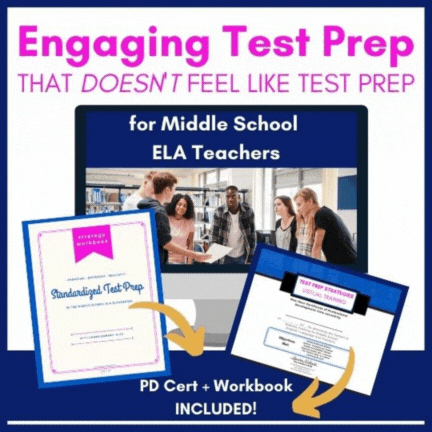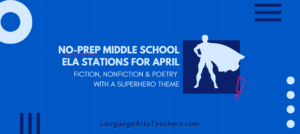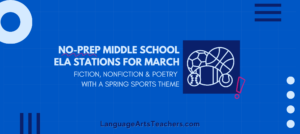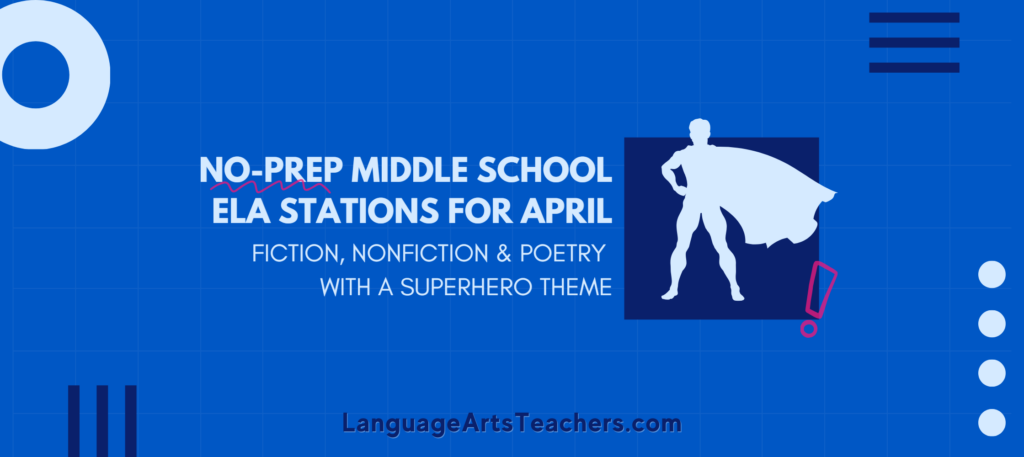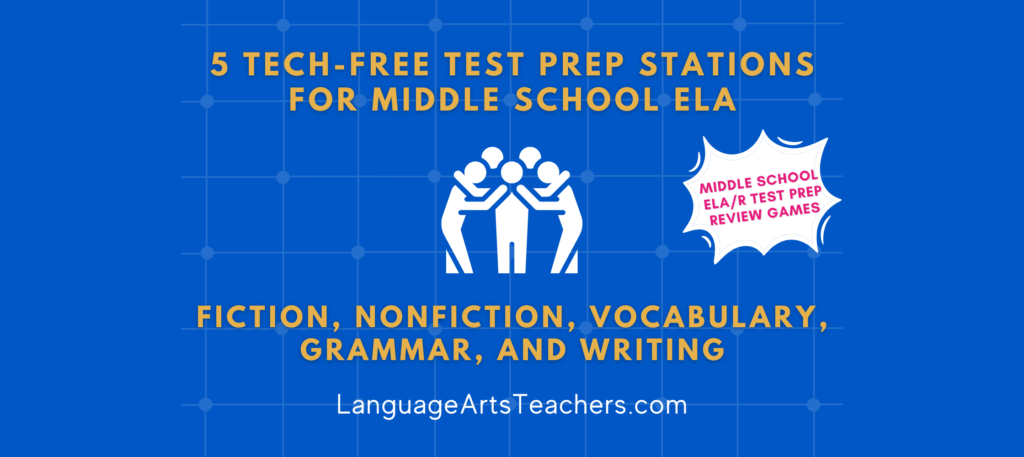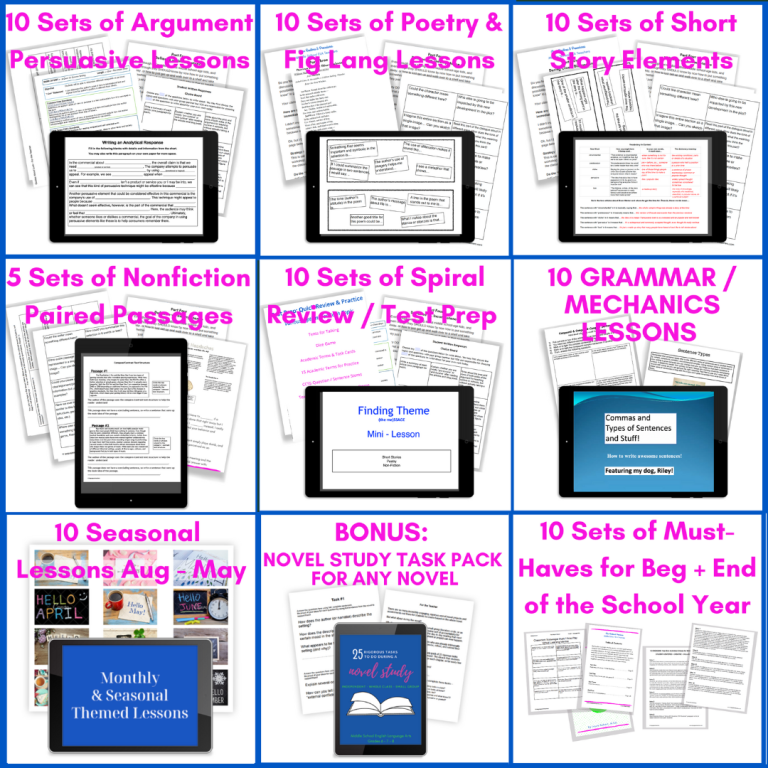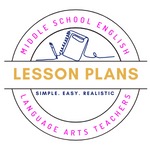The playful way I teach sentence variety using stations
When you’re tired of reading student writing that feels like a monotonous drumbeat of simple sentences. . .
When you want to inspire your middle schoolers to write with more flair and sophistication. . . This is the place for ideas + my own how-to’s (because I teach grammar using stations!).
Why Sentence Variety Matters
- Enhanced Engagement: Varied sentence structures keep readers interested and prevent their attention from wandering.
- Improved Clarity: Complex sentences can clarify relationships between ideas, while compound sentences can show connections.
- Stronger Voice: A mix of sentence types can help students develop a more distinctive and engaging writing style.
Teaching Strategies
- Start with the Basics:
- Review Sentence Types: Begin by reviewing simple, compound, complex, and compound-complex sentences. Use visual aids like diagrams or sentence strips to make the concepts clear.
- Provide Examples: Share examples of each sentence type from literature or real-world texts. Discuss how the author uses sentence variety to achieve specific effects.
- Encourage Sentence Combining:
- Combine Simple Sentences: Show students how to combine two simple sentences into one compound sentence using coordinating conjunctions (and, but, or, nor, for, yet, so). For example: “The cat chased the mouse. The mouse ran away.” can become “The cat chased the mouse, but the mouse ran away.”
- Create Complex Sentences: Teach students to combine simple sentences using subordinating conjunctions (because, although, if, when, while, etc.) to create complex sentences. For example: “The dog barked. The mail carrier arrived.” can become “The dog barked because the mail carrier arrived.”
- Model and Practice:
- Share Your Writing: Model effective sentence variety in your own writing. Show students how you use different sentence types to convey meaning and create interest.
- Guided Practice: Provide students with opportunities to practice sentence combining and sentence variety in their own writing. Offer feedback and suggestions to help them improve.
- Use Sentence Variety in Stations:
- Creative Writing Prompts: Assign writing prompts that encourage students to use a variety of sentence structures. For example, ask them to write a story that begins with a complex sentence and ends with a compound-complex sentence.
- Revision Activities: Have students revise their own writing to incorporate more sentence variety. Provide specific feedback and suggestions for improvement.
- Start Small: Begin by focusing on one or two sentence types at a time. Gradually introduce more complexity as students become comfortable with the basics
Here’s the Student Lesson
{ This is what they work on in stations }
Compound Sentences
- Imagine a compound sentence as two friends who are always together. They’re complete sentences (or independent clauses) joined by a word called a coordinating conjunction. Think of the coordinating conjunction as a bridge that connects the two sentences.
Examples:
- Jalen was nervous about tryouts, but he wanted to do his best.
- Kyle felt confident in his abilities, and he was excited to show off his skills.
Coordinating Conjunctions (the “bridge”)
- and, or, for, nor, but, yet, so
Complex Sentences
- A complex sentence is like a parent and a kid. It has one main sentence (the parent) and one detail sentence (the kid) that depends on the main sentence to make sense. The “kid” part doesn’t make sense by itself.
Example:
- Since Jalen was so nervous, his heart pounded loudly.
Use words like:
- since, because, while, even though
Your Turn
Write 3 compound sentences about the story. Yes, you’re making them up!
Write 2 complex sentences about the story. Yes, you’re making them up!
For the Teacher
Here are some ideas and examples of compound sentences and complex sentences based on the short story:
Compound Sentence Examples
- Jalen was nervous about tryouts, but he was determined to do his best.
- Kyle felt confident in his abilities, and he was excited to show off his skills.
- The locker room was filled with chatter, and the players were adjusting their gear.
Complex Sentence Examples
- Because Jalen was so nervous, his heart pounded in his chest.
- While Kyle was confident, Jalen felt scared.
- Even though Jalen missed the tackle, he kept trying.
Additional Tips
- Encourage students to experiment with different coordinating and subordinating conjunctions.
- Provide opportunities for students to practice writing compound and complex sentences in various writing contexts.
- Give students specific feedback on their use of sentence variety.
- Celebrate their successes and encourage them to continue exploring different sentence structures.
By incorporating these strategies into your lessons, you can help your students become more confident and skilled writers.
NOTE: That^ lesson is just a small part of an entire set of stations materials that exist as my “Fall Sports” themed stations that I loooove using in September.
Get the entire collection of Fall Sports Stations when you join Ready, Set, Stations —> And since fall sports are often part of students’ extracurricular activities year-round, you can use these stations any time of year, really!
……………………………………………………………………….
Let me overthink stations so you don’t have to😉
INTRODUCING:
I’ll send you 12 fresh, themed station activities loaded up ready-made style each month:
✅One fiction passage + one nonfiction passage + one poem
➡️ One reading, writing, grammar, and vocabulary station for EACH passage
🙋🏻♀️ That’s 3 thematically-linked passages with 4 stations per passage = 12 stations each month!



